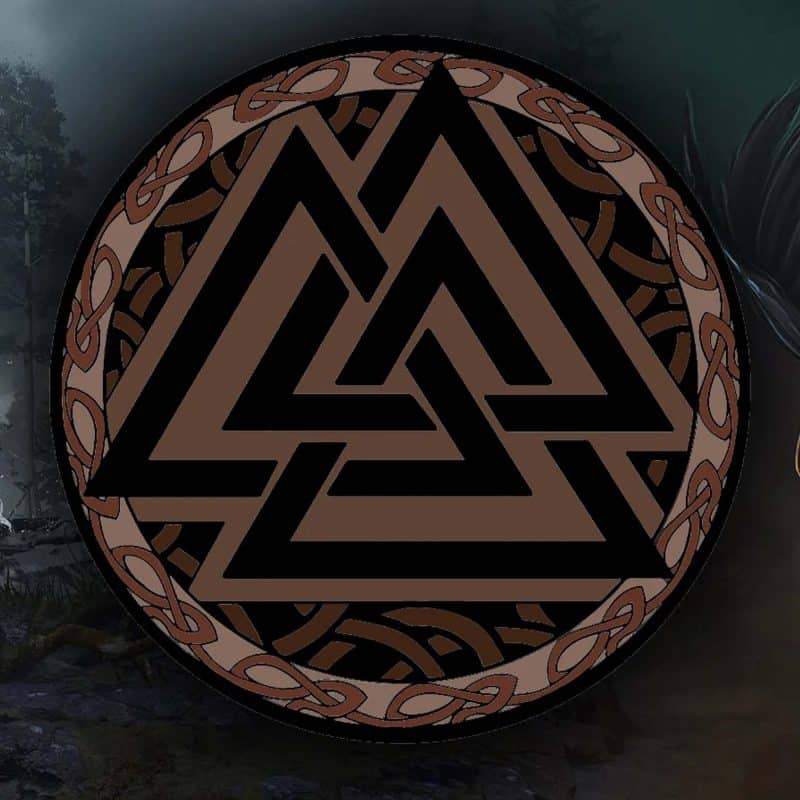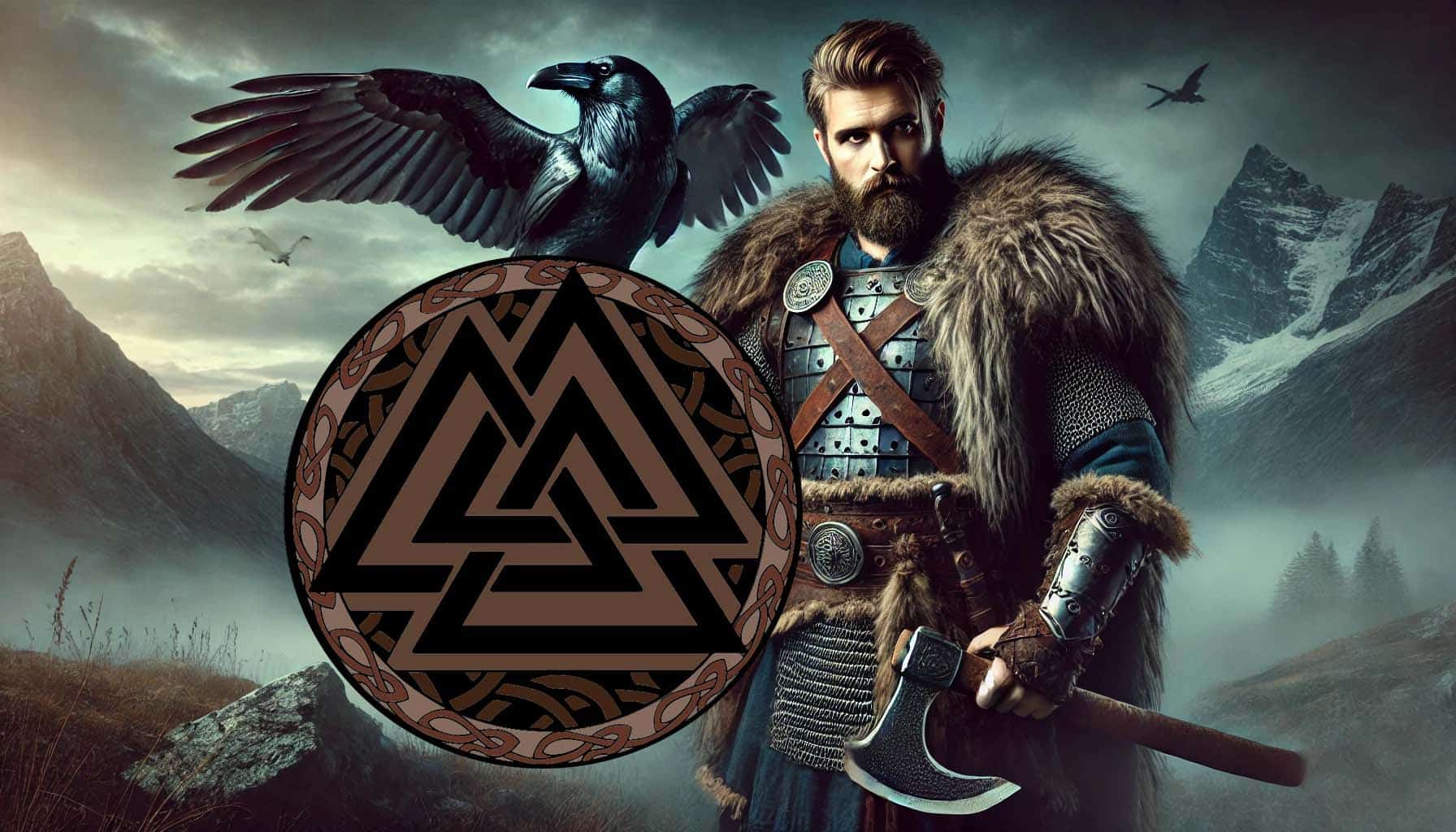Nordic Discovery
Valknut: Meaning and Origin in Norse Mythology
The Valknut is a well-known symbol in Norse mythology, consisting of three interlocked triangles. While its exact meaning remains debated, this symbol is often associated with Odin and fallen warriors. It has been found on ancient Norse artifacts and runestones, suggesting its importance in Viking beliefs and rituals.
The Etymology of “Valknut“
The term “Valknut” comes from Old Norse and is composed of two parts:
- “Val”: Meaning “slain warrior” (as seen in “Valhalla,” the hall where fallen warriors are welcomed).
- “Knut”: Meaning “knot” or “binding.”
When combined, “Valknut” can be interpreted as the “knot of the slain warriors.” This interpretation aligns with its frequent presence in Viking funerary art and grave goods, reinforcing its connection to death, the afterlife, and Odin.
Different Variations of the Valknut
There are two primary versions of the Valknut symbol:
- The unicursal (single-line) form – This version can be drawn in one continuous stroke and is found on the Tängelgarda stones in Sweden, dating back to the 7th century.
- The tricursal (three separate triangles) form – This version consists of three distinct triangles interlocked, as seen on the Stora Hammar stone, also in Sweden from the same period.
These symbols were often depicted alongside scenes of battle, warriors, and Odin himself, strengthening their ties to war and the divine. Some historians suggest that the Valknut was used as a protective symbol, guiding the souls of warriors to Valhalla.
Interpretations of the Valknut’s Meaning
Several theories attempt to explain the significance of the Valknut:
1. The Symbol of Odin’s Warriors
Scholar Hilda Ellis Davidson suggests that the Valknut symbolizes “the spiritual liberation of warriors, allowing them to join Odin’s army in preparation for Ragnarok.”
- This association is evident in Anglo-Saxon cremation urns, where symbols of wolves and ravens—creatures closely tied to Odin—are present.
- The Valknut may have been a marker of Odin’s favor, signifying that the deceased warrior was chosen to fight alongside the gods in the final battle.
2. Seidr Magic & Battlefield Influence
- Seidr is a form of Norse magic originating from the goddess Freya.
- Though initially considered a feminine magic, Odin mastered it and used it in battle to weaken enemies or remove fear from his warriors.
- Some scholars believe that the Valknut represents Odin’s magical power, particularly his ability to confuse enemies on the battlefield.
- Additionally, some sources suggest that the Valknut could have been used as a charm to help warriors transition from life to death with courage and honor.
3. Connection to Yggdrasil (The World Tree)
- Another theory links the Valknut to Yggdrasil, the cosmic tree that represents the Norse universe.
- Some believe that each point of the three triangles corresponds to one of the Nine Worlds in Norse mythology.
- Given that Odin hung himself from Yggdrasil to gain wisdom, the connection between the Valknut and the tree might symbolize the journey between life and the afterlife, wisdom, and enlightenment.
The Valknut in Viking Burial Rites
The Valknut has been discovered on various Viking burial artifacts, including runestones, weapons, and ship burials. This indicates its significance in funerary rites and the Viking belief in an afterlife where warriors continue to serve Odin. Some theories propose that the symbol was used in rituals to ease the passage of the dead into the afterlife or to mark those who had earned a place in Valhalla.
Additionally, in some depictions, the Valknut is seen near Odin or animals linked to him, such as ravens or wolves. This reinforces the idea that it serves as a bridge between the earthly realm and the divine world of the gods.
Modern Use of the Valknut
Today, the Valknut remains a popular symbol in tattoo art, often chosen for its various meanings and interpretations. It is frequently used by those with an interest in Norse mythology, paganism, and Viking culture. However, it is sometimes misused or associated with negative connotations in modern contexts.
The symbol has also been adopted in modern Asatru and Heathenry, where it is used to represent devotion to Odin and Norse spirituality. Some Viking reenactors and historical enthusiasts wear it as a mark of their connection to ancient traditions.
Despite its debated origins, the Valknut endures as a powerful emblem of strength, sacrifice, and the warrior’s journey to the afterlife. For those interested in Norse mythology, studying the Valknut’s origins and cultural significance can provide deeper insight into Viking beliefs and symbolism.
Sources
- Davidson, Hilda Ellis. Gods and Myths of Northern Europe. Penguin Books, 1964.
- Simek, Rudolf. Dictionary of Northern Mythology. Boydell & Brewer Ltd, 1993.
- Price, Neil. The Viking Way: Magic and Mind in Late Iron Age Scandinavia. Oxbow Books, 2019.
- Snorri Sturluson. The Prose Edda. Translated by Jesse L. Byock, Penguin Classics, 2005.
- Various Runestones and Archaeological Findings from Sweden and Norway.


